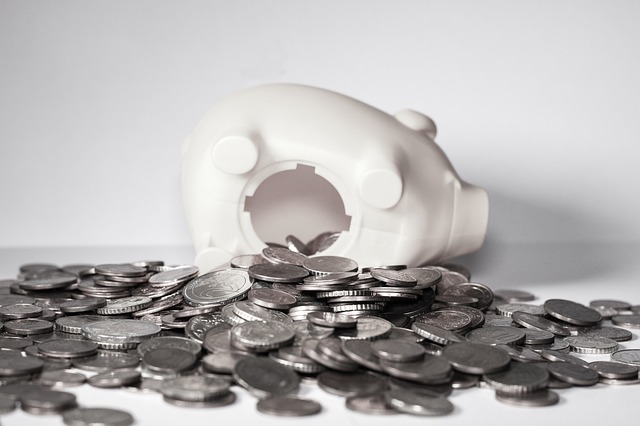In the immediate 24 to 36 months following the Great Economic Crash of 2008, there was a huge spike in the numbers of home foreclosures, company mergers (especially in the financial services and banking industries) and personal and business bankruptcies.
The reality hit us all hard, that we were all living beyond our means because we thought we could.
The Economic Earthquake
Housing was booming, unemployment was historically low, interest rates were modest and the economy was humming along until that fall of 2008, just weeks before what would be a historic presidential election. The recession was already entrenched, but it wasn’t until the stock and housing markets crashed in near-simultaneous fashion that the world economy changed in ways we may have never foreseen.
It was so dramatic that the economy took a long time to recover, and for many of us, it took us a couple of years to regain our financial consciousness and realize what had just happened and why.
Oh sure, we can get into the weeds about an over inflated stock market and the dangerous mortgage-backed securities that were peddled and yada yada yada. The bottom line was, for us personally and in our small businesses, we knew deep down that the economy wouldn’t be fixed unless we each realized that we had too much debt and not enough savings.
Personal Speculators?
We could blame speculators, but in a sense, weren’t we speculating ourselves, betting on the concept that the status quo would hold and that the money would always be there?
We did speculate on margin, and many of us truly got burned.
Going forward, many families and individuals and small businesses have been working to streamline their financial operations, working to get out of debt and accrue more savings in order to withstand the next oncoming storm, which will inevitably happen.
The New Normal
If you are now in that boat where you are getting out of debt and being more aware of how you spend money, good for you. However, if you have always been one who was a bit of an impulse buyer, then you know that at any time you could fall right back into the same bad habits that got you in trouble in the first place.
Besides being on a budget, a natural impulse or spontaneous consumer might need some new tools to help curb those impulses and remain disciplined in spending. And these tools may just save you a bunch of money – more than maybe you realize.
To help you control your impulses and enable you to squeeze more money out of that budget, here are three tools, or tests, you can use as you consider an impulse purchase.
The Pause Test
When you are browsing through a store and you come across an item that is not on your list, the first test you can use is what we call the Pause Test. Before you take that “not-listed” item and put it in your cart, force yourself to pause for one minute and think honestly about whether you really need that item.
Most impulse buys are based on emotion. If you stop and give yourself a minute to think and use actual logic and let the emotion of your wants get in conflict with the logic of your needs, more often than not the logic will win out. If, after that full minute of pondering, you can still feel OK about getting the item, you can have a logical justification for the purchase. But don’t put that item in the cart just yet.
The Cash Test
Many times, if we are on a family budget, it is usually because we need to watch our cash and how it is spent – in a budget, cash is more important than things. That is what can make this test so effective, just in case the item you’re considering passed the Pause Test.
If after the Pause Test you can justify putting the item in your cart and spending your hard-earned money on that item, just to humor yourself apply the Cash Test to that item. Would you rather buy the item, or have the cash instead?
Yes, this will involve another pause before you decide to buy the item. Ask yourself this question as you look at the price tag of the item you are considering buying on impulse. Would you rather spend the money on this item, or would you rather have the cash for savings?
If you were to think of this money as the only money you have left to spend, would you rather bank it or spend it on this item? If you put this item up against savings as the only other option, and cash is king in your budget, you may find it hard to justify spending that precious little money when you may need it for savings this month.
However, if you feel like the expense is still justified, then this item moves on to the third test.
The Now Test
So here we are now, about 90 seconds after you first caught a glimpse of this item that emotionally you felt you just had to buy impulsively. If, after 90 seconds of pondering, you are still holding the item in your hand, it means the item has passed the first two tests – it worked through your logic so you have a justification for buying the item, and you feel that the item is more important to you than the money you have in your wallet to pay for it.
So now you come to the third and final test, and this one may ultimately decide for you whether this item should be bought or not. The question to ask yourself now is, Do I need this item right now?
Your impulsive emotions will quickly say “yes,” but you have to stop and think about the question and the key words are “need” and “now.” Very often we buy things impulsively and we don’t actually use them right away. We think we will “need” it “eventually,” and it is on sale for a great price now, so why not buy it now?
But again, stop and think. If the item in question is a pair of sunglasses and it’s winter, do you think you will need that item immediately? You may wait until spring or summer to buy them. And do you already have a pair of sunglasses that work? Then you may not really need this new pair until the ones you currently have break.
Make sure you think hard about the immediate need for the item you are considering. If it does not meet the “now” test, then that is an item that you should not buy and it should go on the shelf.
Final Thots
Yes, it is a gauntlet of tests that an item may go through, but for many of us, impulse buys are often the ones that get us in financial trouble with our budgets if not our actual wallets. Making sure to stop and think about these three tests before you make a spontaneous purchase will help you save money because very few impulse items will pass all three tests, and the time it takes to go through these tests will make the item less of an impulse buy and instead will make it one that is thought-out and reasoned. And in that case, it is a purchase that will pay off for you in the long run.
Going through these tests may make your shopping trip a little longer, but it also may make your shopping bags lighter when you carry them to the car.
Jon blogs at Penny Thots, a personal finance site that helps readers improve their finances, one day at a time.

James Hendrickson is an internet entrepreneur, blogging junky, hunter and personal finance geek. When he’s not lurking in coffee shops in Portland, Oregon, you’ll find him in the Pacific Northwest’s great outdoors. James has a masters degree in Sociology from the University of Maryland at College Park and a Bachelors degree on Sociology from Earlham College. He loves individual stocks, bonds and precious metals.

